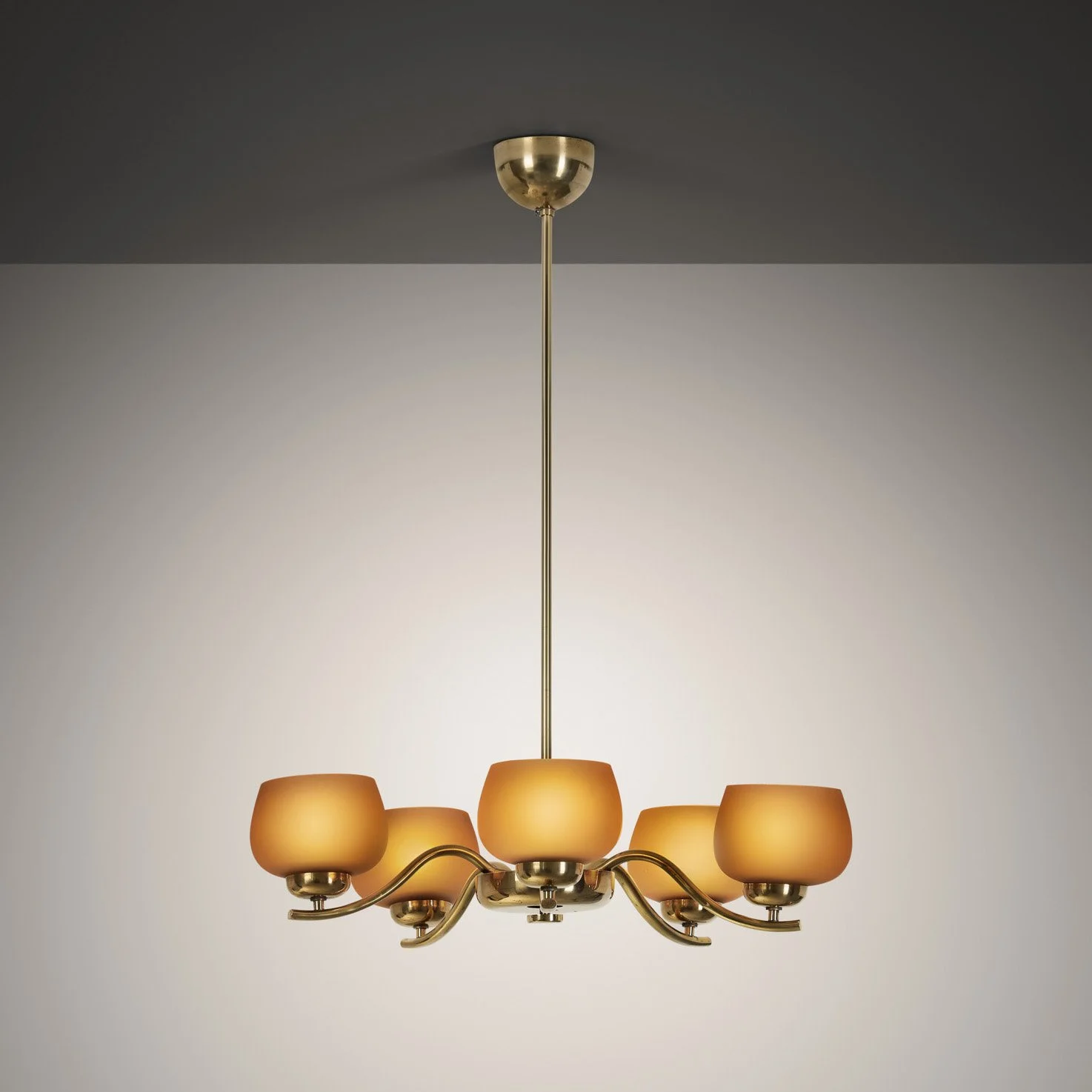Paavo Tynell
Paavo Tynell, “the man who illuminated Finland” was born in Helsinki, Finland in 1890. Tynell attended the Central School of Applied Arts in Helsinki, where he later also taught metalwork between 1917 and 1923.
He started his career as a tin and blacksmith at the company Kory Oy, while simultaneously studying at the Helsinki University of Industrial Arts. He graduated as a ‘master craftsman’ in 1913. In 1918, Tynell co-founded the metalwork and lighting company Oy Taito Ab and remained its managing director until 1953. At first the company focused mostly on interior and exterior metalwork, such as statues and railings. Later, during the 1930s, Taito also began producing lamps for the lighting sector. Paavo Tynell rose to prominence in the 1930s and 40s when he collaborated with some of the most renowned Finnish architects, Alvar Aalto being the most notable one. Both Aalto and Kaj Franck designed works for the company. A turning point for Taito Ab came in 1947, when Tynell, who himself focused solely on designing lighting, became involved with Finland House, the New York-based design gallery and restaurant. Here his works were showcased permanently and also used in the restaurant. Due to Tynell’s splendid and quite distinctive style - which was still uncommon in North America - the cooperation brought him a lot of visibility in the American press; most notably in Life Magazine, Interiors Magazine and The New York Times. These expositions paved the way for Tynell to create lamps for important spaces, such as the UN Secretary General’s office in New York and the Parliament House in Helsinki.
Known for their subtle, delicate aesthetic, Tynell’s designs often utilised perforated metal and brass and referenced nature through stylized leaves, vines, and snowflakes. Furthermore, thanks to his knowledge and skill in metalwork, Tynell was able to create indirect lighting to achieve a softer and more atmospheric source of light, which made his works especially popular in restaurants and other locations where the overall atmosphere required dim sources of light.
From the 1930s throughout the 1950s, Tynell was considered Finland’s most successful lighting designer, and he contributed to numerous public spaces’ design, inlcuding the Sokos Hotel and its penthouse lounge, Café Vakuuna, the Lasipalatsi building in Helsinki and the Helsinki Central Railway Station. During the 1950s, Tynell collaborated with the architect and interior designer Aarne Ervi, who promoted Tynell’s lighting designs in many of his projects, including the Tapiola Housing Project in Espoo, Finland, several private residences, and oddly, even a power plant located in northern Finland.
Tynell worked as the CEO and chief designer of Oy Taito Ab until his retirement in 1953 when the company was sold to Idman Oy. Tynell however, continued to design for Idman until the mid-1960s, while also working as a freelance designer for many other companies in Finland and abroad like Litecraft ja Lightolier. In 2018, the Danish design company Gubi relaunched a collection of Tynell’s lighting designs. After a hugely successful career Paavo Tynell passed away in his home town of Helsinki in 1973, at the age of 83. ~H.


































